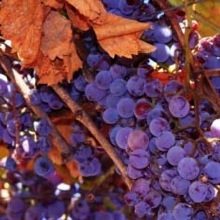Ethnobotanical Garden
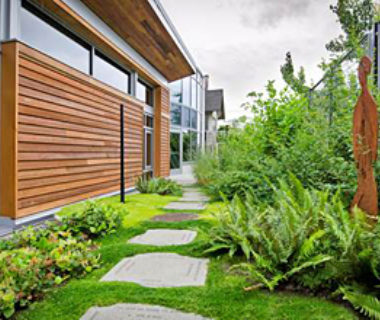
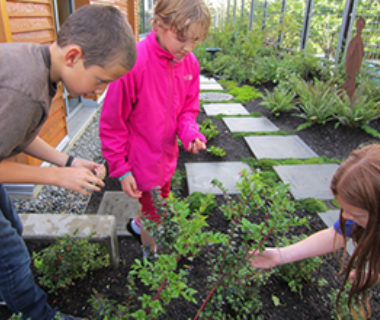
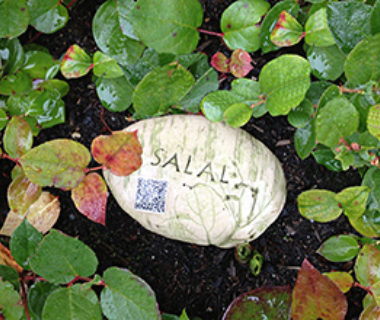
The Science Wing site provides urban agriculture in the form of an ethnobotanical garden, which is a collection of native plant species of significance to pre-Columbian peoples who have lived in this region. The garden has plant markers with the plant's common name and a QR code, that when scanned, shows the plant's scientific name and a link to the information for that plant below. [Go to the Science Wing page]
Cornus nutallii ‘Eddie’s White Wonder’
Habitat: Moist, well-drained sites in mixed forests, often along streams or gullies.
Form: Deciduous, oval-shaped leaves. Upright growth to 40’. Very small green flowers surrounded by large white bracts. Fruits are clusters of red berries.
Ethnobotany: The wood was used by Native Peoples to make tools, and the bark was used to make dyes and medicines.
Spring
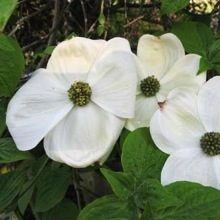
Summer
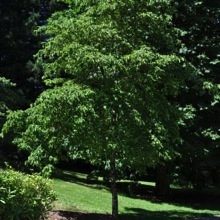
Autumn
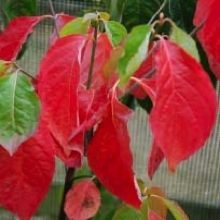
Winter
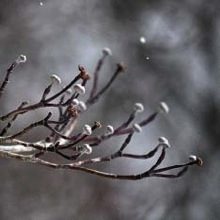
Cornus sericea ‘kelseyii’
Habitat: Moist areas; usually swamps or stream-side forests.
Form: Deciduous, oval-shaped leaves. Mounding growth to 3’. Flat topped clusters of small white flowers in late spring. Branches remain bright red through winter.
Ethnobotany: The native peoples of the interior ate the fruit, and coastal peoples used the branches to make basket rims and used the bark to make medicine.
Spring
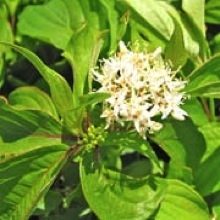
Summer
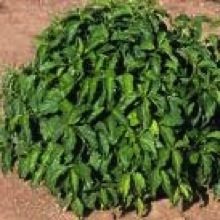
Autumn
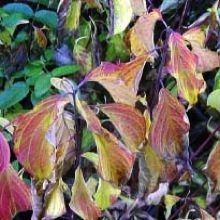
Winter
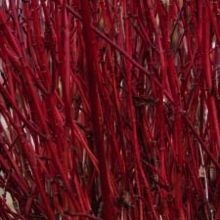
Elymus glaucus
Habitat: Dry to moist open areas and forests, low to middle elevations.
Form: Tufted perennial grass with flat leaves growing to 4’. Infloresence are spikes, 1/4”-1” long.
Spring
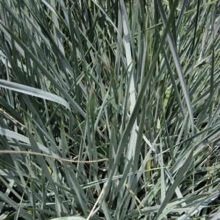
Autumn
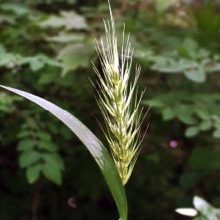
Ledum groenlandicum
Habitat: Wet areas like bogs, with poor soil, low to medium elevations.
Form: Evergreen, narrowly oblong leaves. Small white flowers grow in clusters. Fruits are dry, hairy capsules drooping off stem.
Ethnobotany: The leaves were used by native peoples to make tea to drink or as a medicine.
Spring
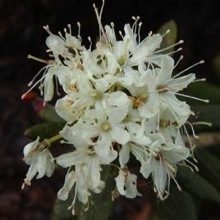
Summer
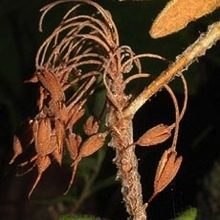
Autumn
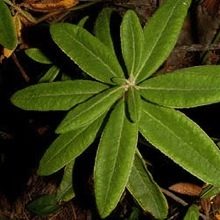
Oemleria cerasifomris
Habitat: Dry to moist, open areas and stream banks at low elevations.
Form: Shrub or small tree to 10’. Alternate deciduous leaves, broad lance-shaped leaves. Small white flowers hang in clusters in early spring. Bluish-black plum-shaped fruit.
Ethnobotany: Native peoples ate the berries fresh or cooked with Oolichan grease. The twigs were chewed and applied to sore areas. The bark was made into a medicinal tea.
Spring
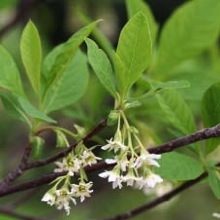
Summer
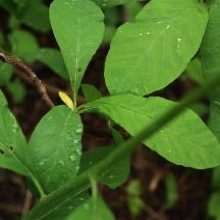
Autumn
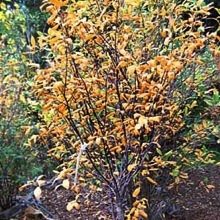
Winter
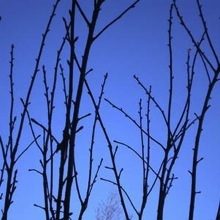
Polystichum munitum
Habitat: Moist forests at low elevations.
Form: Densely packed pinnate fronds, evergreen leaflets are alternately arranged and sharp-edged. The fruit, or sori are on the underside of the leaves.
Ethnobotany: Native peoples used the fronds to line their pit ovens. The fronds were also used as flooring and bedding.
Spring
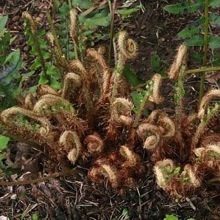
Summer
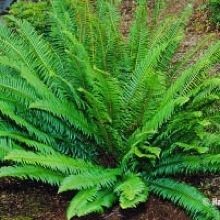
Symphocarpus albus
Habitat: Dry to moist areas, open forests, riverine areas.
Form: Upright growth to 6’. Opposite, deciduous, oval shaped leaves. Pink to white bell shaped flowers. Fruits in clusters of white berries.
Ethnobotany: The poisonous berries were avoided by native peoples.
Spring
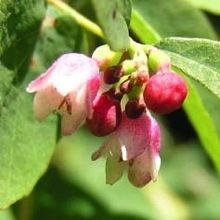
Summer
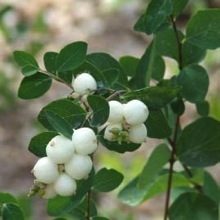
Winter
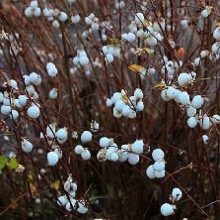
Sagina subulata
Habitat: Native to Europe, occurs on dry gravelly or sandy soils in open areas.
Form: Perennial, low growing in a dense mat to 1” tall. Tiny white flowers. Seeds are borne in a small capsule. Brighter green than “Irish” Moss.
Spring
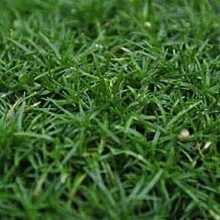
Summer
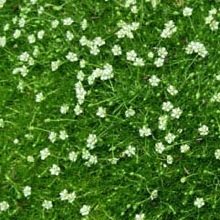
Vaccinium ovatum ‘Thunderbird’
Habitat: The edges and openings of coniferous forests at low elevations, near the beach and tidewater.
Form: Erect, bushy growth to 12’. Alternate, evergreen leaves are leathery and shiny on top. Pink, bell shaped flowers in clusters. Purple-black berries are edible.
Ethnobotany: The berries were eaten by native people and eaten fresh or with oil or made into cakes. The berries are an important source of winter food.
Spring

Summer
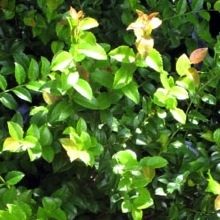
Autumn
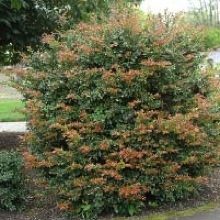
Winter
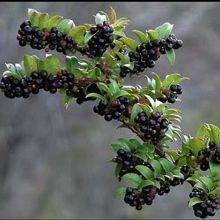
Vaccinium x ‘Northsky’
Habitat: A wide range of habitats, including moist wetland areas and dry, open spaces.
Form: Shrub to 40” high. Deciduous, pointed, elliptical-shaped leaves. Pink flowers occur in late spring. Fruits occur in the summer and are the familiar dark blue berries.
Ethnobotany: Native peoples ate the berries fresh, dried them into cakes, or cooked them into jams and preserves.
Spring
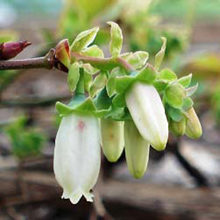
Summer

Autumn
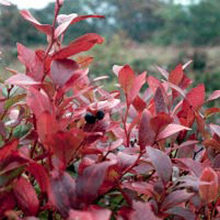
Winter
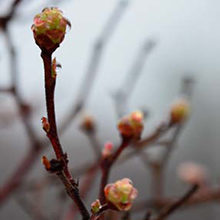
Gaultheria shallon
Habitat: Coniferous forests, rocky bluffs, and shoreline areas. Low to medium elevations.
Form: Alternate, evergreen leathery leaves. White, bell shaped flowers on flower stalks. Edible, 1/4” dark purple berries.
Ethnobotany: The plentiful berries were an important food source for native peoples. Used to make jams and preserves today.
Spring
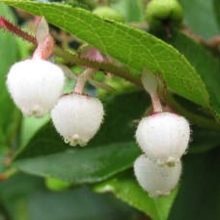
Summer
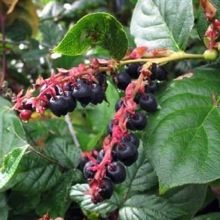
Autumn
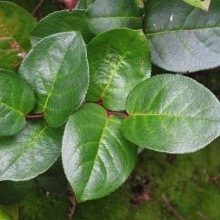
Mahonia repens
Habitat: Dry to somewhat moist areas of open and dense forests, at low to medium elevations.
Form: Low growing to 1’ tall. Shined, barbed leaves. Small, bright yellow flowers in clusters in spring. Edible, blue berries in summer.
Ethnobotany: The berries were used by native peoples for food, medicine, and ceremonial purposes.
Spring
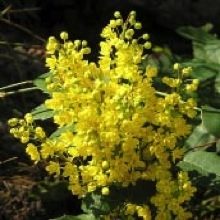
Summer
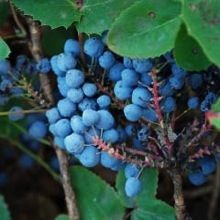
Winter

Vaccinium vitis-idaea
Habitat: Moist areas; usually swamps or stream-side forests.
Form: Low, spreading growth to 18”. Small, oval leaves. Small, bell shaped pink flowers in early summer. Edible, bright red berries in late summer to early fall.
Ethnobotany: This plant is found throughout the northern hemisphere. The berries are eaten or used to make preserves.
Spring
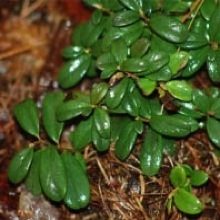
Summer
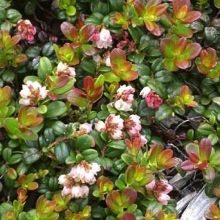
Autumn
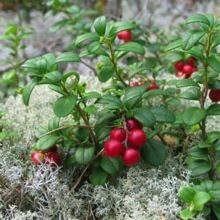
Actinidia arguta ‘Isaai’
Habitat: Native to Asia.
Form: Deciduous vine, with 3” elliptical leaves. Large, white flowers. Edible fruits are a smaller version of the popular kiwi fruit.
Ethnobotany: This cultivar of the hardy kiwi is from Japan. The fruits are eaten and used in cooking.
Summer
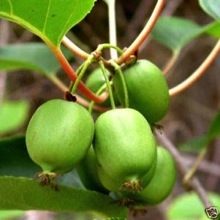
Asarum caudatum
Habitat: Moist, shaded forest floors with thick leaf matter, low to middle elevations.
Form: Evergreen perennial groundcover with heart to kidney shaped leaves. Purple to yellow bell shaped flowers with 3 lobes. Fruits are fleshy capsules .
Ethnobotany: Native peoples used the ginger-like root for medicinal purposes. Others used the leaves as medicine or a good luck charm.
Spring
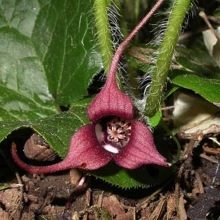
Summer
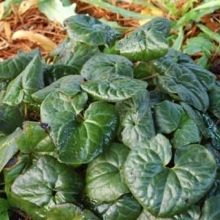
Camassia quamash
Habitat: Grassy slopes and meadows at low to middle elevations.
Form: Perennial, long grass like leaves to 18”. Flowers are pale to deep blue with narrow petals. Fruits are 1” egg shaped capsules.
Ethnobotany: Camas bulbs were an extremely important food for native peoples, who boiled, baked, and roasted them. They were dug up during flowering so they weren’t confused with a poisonous relative of the Camas.
Spring
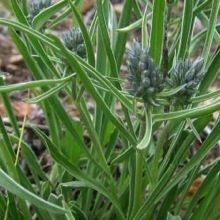
Summer
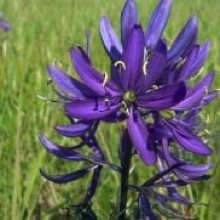
Autumn
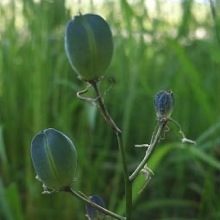
Winter
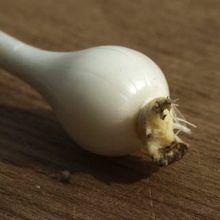
Fragaria vesca
Habitat: Open areas and forest clearings at low to medium elevations.
Form: Semi-evergreen, 3 leaflets attached at the base to a long stalk. 1” wide white flowers in late spring. Small, edible red strawberries.
Ethnobotany: The fruit was eaten fresh or dried by native peoples, and the leaves were sometimes used to make tea.
Spring
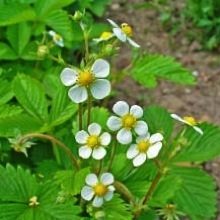
Summer
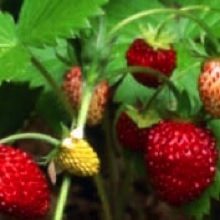
Autumn
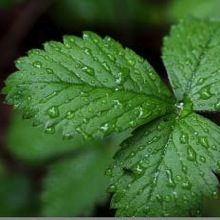
Lilium columbianum
Habitat: Meadows, open forests and clearings at low to subalpine elevations.
Form: Perennial, narrowly lanced shaped leaves. Bright orange flower with red to purple spots. Fruits are barrel shaped capsules.
Ethnobotany: The bulbs were eaten or used to flavor food by native peoples. A superstition existed that smelling the speckled flower would cause freckles.
Spring
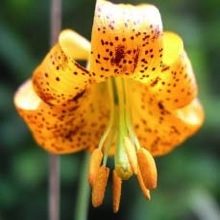
Summer
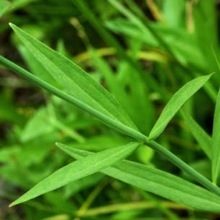
Sagina subulata ‘Aurea’
Habitat: Native to Europe, occurs on dry gravelly or sandy soils in open areas.
Form: Perennial, low growing in a dense mat to 1” tall. Tiny white flowers. Seeds are borne in a small capsule.
Spring
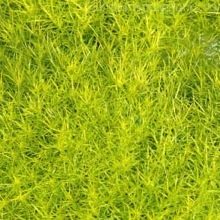
Summer
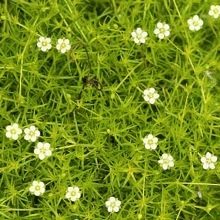
Trillium ovatum
Habitat: Moist to wet forests, shady open areas, and near water, at low to medium elevations.
Form: Perennial, leaves are wide, pointed oval shape, 3-5 whorled around stem. Flowers are white with yellow center. Fruits are oval, green berry-like capsules.
Spring
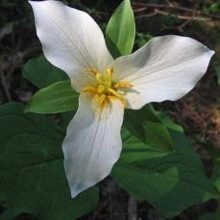
Summer
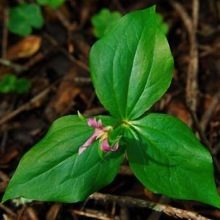
Autumn
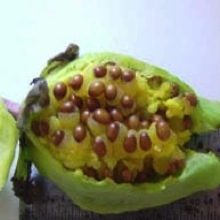
Vitis ‘Buffalo’
Habitat: Sunny, open areas, often south facing slopes. Primarily grown commercially.
Form: Deciduous vine, leaves are heart shaped to 3-lobed. Flowers are petal- less and have exposed organs, borne in clusters. Fruits are the familiar grapes.
Ethnobotany: People all over the world use grapes to eat, make wine and juice, or to dry into raisins.
Spring
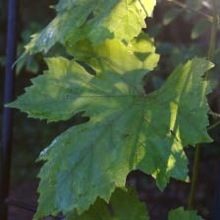
Summer
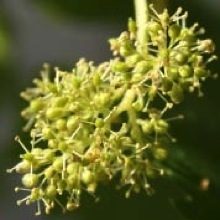
Autumn
